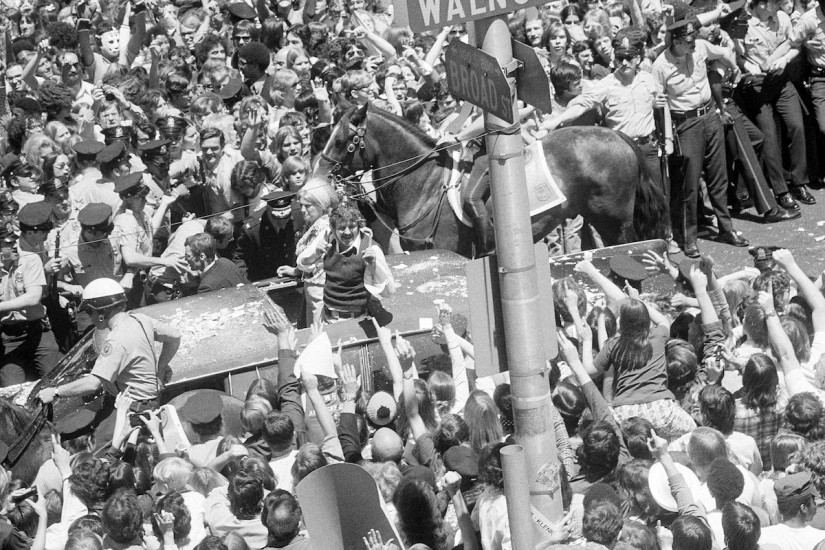Somewhat ironically, the rise of blue-collar identity politics coincided with a decline in Philadelphia’s blue-collar economic base. Like cities all across the country, deindustrialization, industrial flight, and a declining national economy wreaked havoc on traditionally working-class jobs. Local industries had been searching for lower taxes and cheaper workforces in the union-weak suburbs or Sunbelt South for decades. By the 1970s industrial relocation began to sap the city’s manufacturing strength. Likewise, while record-high federal spending in the Philadelphia area had made construction work one of the most lucrative blue-collar employment options in the 1960s—so much so that it set off a confrontation between civil rights activists and white construction unions over equal opportunity employment that led to the enactment of the nation’s first fully-formed affirmative action program, the so-called Philadelphia Plan—the sagging economy of the 1970s ended several large-scale public works projects. Even as Frank Rizzo and his blue-collar supporters represented the ascendancy of blue-collar identity politics, the Rizzo administration oversaw the reinvention of the city’s economy. While Rizzo spent the 1970s attacking programs like public housing and affirmative action that he said gave “special privileges” to nonwhites, his team of talented economic advisors attracted new businesses and established policies that helped transform Philadelphia into a center of the health care and pharmaceutical industries. The city was in the midst of shifting from a reliance on light industry and manufacturing to a more white-collar and service sector economy. Frank Rizzo might not have been able to declare Philadelphia a “blue-collar city” if not for the rise of an equally powerful blue-collar ideal in the city’s sports culture.
Blue-Collar Sports and Civic Identity
Drawing inspiration and identity from the city’s professional sports teams was nothing new for Philadelphians in the 1970s. The triumphs and setbacks of the Phillies and Eagles had long taken on larger social and cultural meaning. By the 1970s, however, both teams had suffered years of losing records that left fans disgruntled, perhaps best represented by the infamous incident at the end of an especially disappointing 1969 Eagles’ season when Philadelphians booed and pelted Santa Claus with snowballs. While that particular story is much more complicated than the one sports announcers drum up whenever they want to lampoon Philadelphia fans, it nevertheless hints at the passion behind the city’s sports fandom in the 1960s and 1970s. By then, however, a new obsession rose to win the loyalties of Philadelphia’s blue-collar sports fans: the Philadelphia Flyers.

